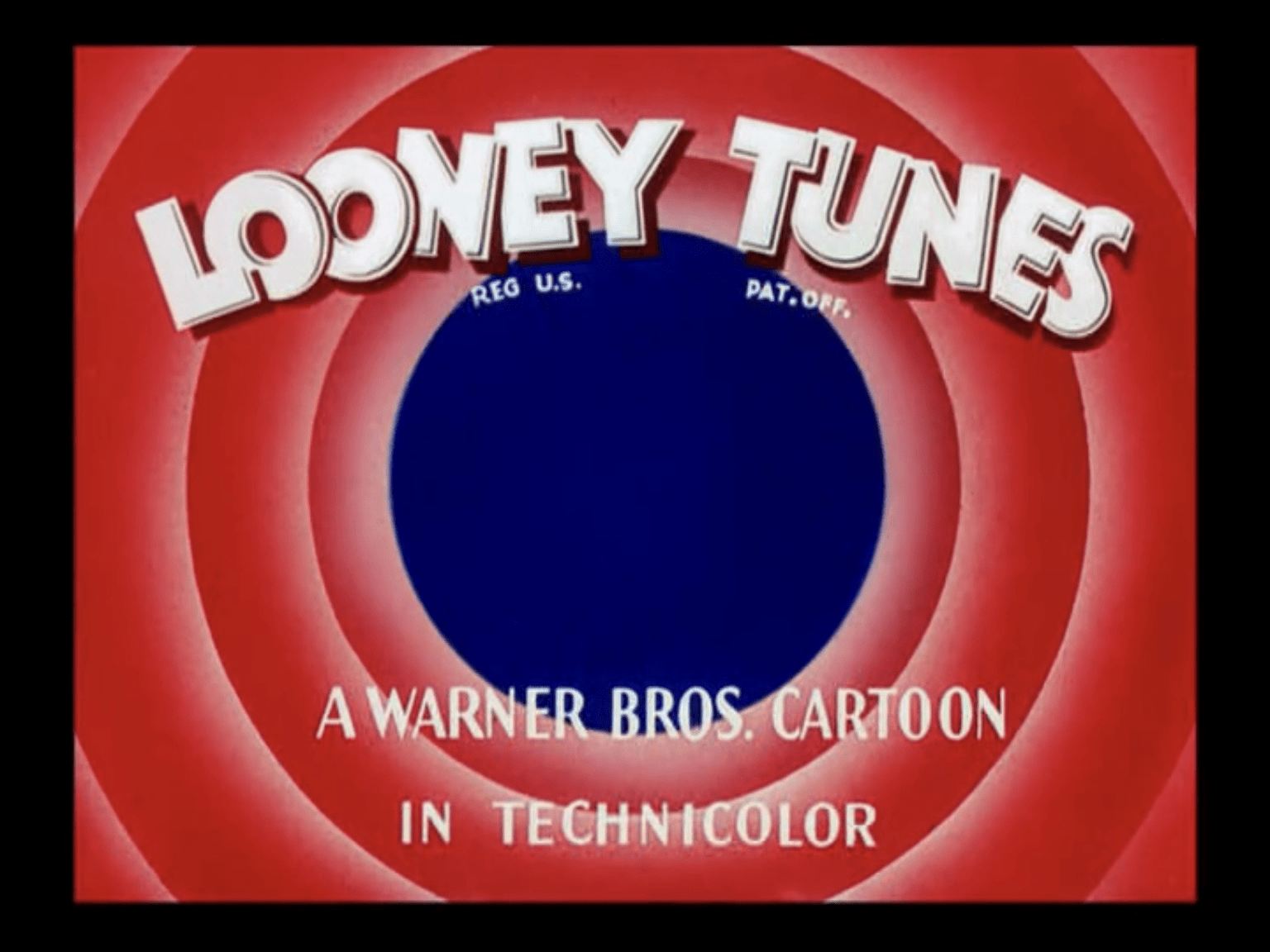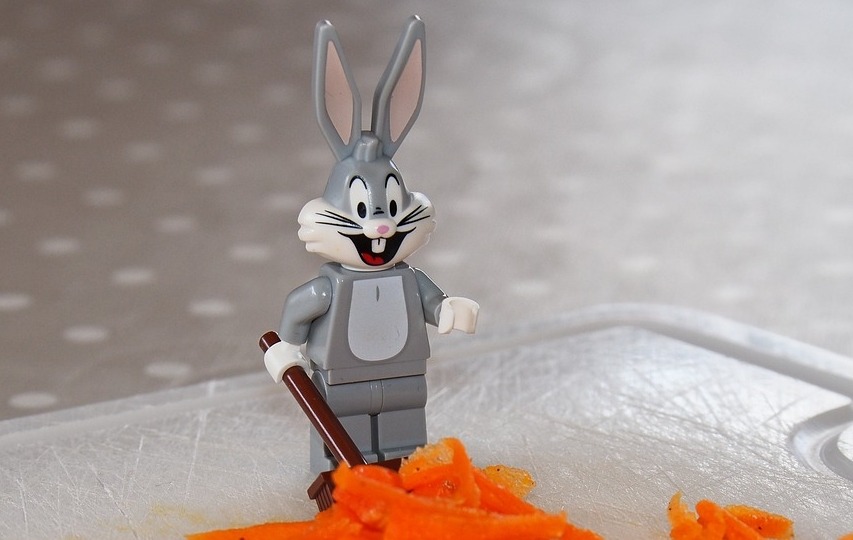Ever since its creation, Looney Tunes, with its series of iconic animated cartoons, has entertained millions of people around the world without fail ever since the 1930s. It’s no surprise why many of the classic Looney Tunes characters are still popular up to this day as back then, people really cared about their crafts; as for the case of Warner Bros Animations, the art of making people laugh. In this article, we will help you know more about some of these characters who have made a mark in the past and who are still doing it today:
1. Bugs Bunny
After making his debut on a show called, “The Bugs Bunny Show” in 1960, he has since captivated audiences not only in the United States but also around the world. In his earlier appearances, he was depicted as an egoistic trickster who just loved to torment everyone around him. Later on, this would be changed thanks to Friz Feleng and Chuck Jones (two legendary animators and directors who were associated with Warner Bros’s Looney Tunes and Merri Melodie Cartoon Series).
Although still a trickster, he’s now changed into a character who’s composed and has a laid-back demeanor. You can almost only see him being ‘mischievous’ when he’s feeling threatened but there can still be a few exceptions here and there as he just couldn’t stop himself from pranking anyone sometimes. His funny and witty comebacks with both friends and adversaries like Yosemite Sam, Daffy Duck, and Elmer Fudd makes Bugs stand out more among the rest. And though he typically outplays all of his opponents, he occasionally tends to be sloppy and overconfident which leads to him suffering from comedic consequences. Over time, his appearances in shorts grew, and his popularity led him to become the poster boy for Looney Tunes and eventually, an American Cultural icon.
2. Yosemite Sam
Most familiar for his portrayal as a Wild West Outlaw, Looney Tunes fans sure love this quick-to-anger-with-a-distinctive-red-mustache villain. In 1945, he made his debut in a short film called, “Hare Trigger” where the story revolves around him, as the antagonist who’s constantly chasing after Bugs Bunny and both having hilarious interactions and clever dialogues in a Wild West setting.
He has so many varieties as he can also be seen portraying himself as a Black Knight, a Hessian Soldier, a Roman, a Prison Guard, and more. Among all the villains Bugs Bunny ‘batted heads’ with, Sam is the only one who had almost prevailed over Bugs Bunny in many situations (if not for the cartoon logic/plot armor saving the latter) as he doesn’t fall for the same tricks twice and is much more clever than the others. The battle of wits between these two is a must-see!
3. Wile E. Coyote
He first starred in a short called, “Fast o’ Furry” in 1949 where he, as the antagonist, tries his best to capture another character, a flightless bird called, ‘Road Runner’ who is depicted to have exceptional speed and agility. In the cartoon, he is a far cry from the coyotes we know. He is shown to be creative when it comes to his devious schemes and wacky inventions and has more reliance on ACME (a fictional corporation that manufactures weapons of different sorts in the Looney Tunes and Merri Melodie Cartoon Universe) weapons instead of his natural, brute strength.
However, no matter how intricate his planning to catch his elusive opponent is, his attempts always end up in failure as in most occasions, some of those plans backfire on him thanks to his ACME weapons that malfunction all the time. There are two versions of this character, the one who speaks in a smooth English accent and the one who’s just silent. Though he is more popularly known for his interactions with the Road Runner, he occasionally can also be seen dealing with other characters in other Looney Tunes shorts such as Bugs Bunny, Daffy Duck, and Sam Sheepdog.
4. Daffy Duck
This animated character made his debut in 1939 on the show called, “Porky’s Duck Hunt.” Since then, he has made 130 brief animation appearances, placing him in the top three most-seen animated characters in the Looney Tunes world, behind Porky Pig (153 appearances) and Bugs Bunny (167 appearances). What makes him interesting is that he can be the protagonist or the opposite at certain times.
Unlike Bugs Bunny who is always calm and collected, his temper can flare on any second. He always thinks highly of himself and is quite obnoxious even though he rarely ever succeeds in anything that he wants to accomplish. Yet, this wouldn’t keep him from becoming one of the most iconic and loved characters of all time though as he’s character development was considered ‘a breath of fresh air’ or better yet, something unique at the time. It was these traits that made fans eventually adore him, making him garner the rank of #14 on TV Guide’s list of the Top 50 Best Cartoon Characters of All Time.
5. Porky Pig
Aside from being famously known for his iconic closing line, “That’s all, Folks!”, this beloved character is also remembered for his signature stuttering in the Looney Tunes and Merrie Melodie series. First seen in “I Haven’t Got A Hat” which was released in 1935, he was the first-ever animated character to be created by Warner Bros that would play an important role in getting the attention of hundreds and thousands of people not just from United States but also from across the globe.
Just like Yosemite Sam, he is also a versatile character; their only difference is that while Sam does what he does best by being a versatile antagonist, Porky does the opposite. He has been featured with a lot of characters as well but his pairing with Daffy Duck in some shorts makes the two more memorable to watch as the two make a fantastic duo; his calm and civil demeanor complements perfectly with Daffy Duck’s unpredictable behaviors and actions.
6. Marvin the Martian
Popularly known for his distinct green Roman helmet and skirt, black face, and red suit, what sets our Martian antagonist apart from his antagonist peers such as Wile E Coyote, Elmer Fudd, and Yosemite Sam is his grand schemes to destroy Earth or capturing other planets and claiming them for Mars. Talk about being patriotic. Marvin has only appeared in five cartoons during the Golden Age of Looney Tunes: Haredevil Hare (1948), The Hasty Hare (1952), Hare-Way to the Stars (1953), Mad as a Mars Hare (1958), and Duck Dodgers in the 24 ½ Century (1963) and is often seen with his green Martian dog, K-9.
The first four revolved around the story of Bugs Bunny always foiling his every nefarious plan towards Earth, causing him to hate the rabbit with a passion while on the last one, he was up against the dynamic and hilarious duo: Daffy Duck and Porky Pig. While he isn’t as popular as Bunny Bugs or the other villains, he still has so many fans who constantly root for him, making him an enduring mainstay in the Looney Tunes Universe.
7. Elmer Fudd
Apart from Yosemite Sam, he is also one of the funniest and most popular human villains in the cartoons. Commonly portrayed as a hunter with a bald head and a brown hat, this hilarious villain made his first debut in the cartoon, “Little Red Riding Hood” in 1937. One of the things that made him so popular was the way he replaced R’s and L’s with W’s when speaking, leading up to his iconic line, “Shhh. Be vewy vewy quiet, I’m hunting wabbits.”
Like Yosemite Sam, he likes to go after Bugs Bunny every chance he gets. It must be mentioned that although most of the time, this gullible hunter gets rolled by the cunning trickster rabbit in his own game, there are times when he actually manages to outsmart him as can be seen in the cartoon, “What’s Opera, Doc?” He also made popular appearances in classics such as the “Rabbit of Seville” and “Hunting Trilogy of Rabbit Season/Duck Season” where he also had comedic interactions with Bugs Bunny and Daffy Duck.
8. Sylvestre the Cat
Ranking fourth among the most frequently seen characters in the Looney Tune universe, Sylvestre the tuxedo cat is often portrayed as someone who’s always itching to get his hands on other characters such as Hippity Hopper, (a kangaroo he always mistakes for a giant mouse), Speedy Gonzalez (a self-proclaimed, “Fastest mouse in all of Mexico” who is both clever and fast) and most notably, Tweety Bird (his achnemesis who always manages to outsmart and outplay him despite being smaller in size). He had his screen debut in 1945’s short film, “Life with Feather.” Since then, he has made appearances in various animated movies, including A Pizza Tweety Pie, Tree for Two, and Birds Anonymous, in which, he reverses his role by playing as the antagonist.
9. Tasmanian Devil
Also known as “Taz”, this popular animated Tasmanian devil is portrayed as being always hungry, having a huge mouth with pointed teeth, a stocky build covered with fur, and an ability to get himself to whirl “like a tornado” which eventually became his trademark. He made his debut in the short film, “Devil May Hare” released in 1954 where he played the antagonist for the main character of the show – Bugs Bunny and only got to be featured in four more shorts during the “twilight era” of the Warner Bros Cartoons as it shut down in 1964. Despite this, his popularity would once again soar in the 1990s due to fans’ efforts and marketing. Today, fan art for Taz is still widespread over the Internet and stickers of him can be seen in cars or are being sold in different stores around the world.
10. Foghorn Legghorn
After making his debut in the cartoon, “Walky Talky” in 1949, this anthropomorphic large rooster soon became popular in the Looney Tunes Cartoons and Merri Melodies due to his Southern drawl and iconic catchphrases such as “I say, I say, I say,” and “That’s a joke, son.” In the cartoons, he is often portrayed as someone who thinks highly of himself, has an overconfident personality, and has the habit of playing pranks on others just for fun. This can be particularly seen in his interactions with Barnyard Dawg whom he loves to annoy with his shenanigans even though the latter makes him pay for it which leads to many hilarious scenes.
Final Thoughts:
If you think about it, you will be amazed at how these characters have endured and stood the test of time and made people laugh so hard just like us today. And the fact that you can still hear them being mentioned, especially by kids today, is a testament to how Warner Bros successfully brought to life characters that are destined to be remembered and not fade into obscurity. So whether you like Sylvestre over Tweety or Daffy over Bugs, it doesn’t matter. What matters is that they are still being appreciated and popularized today as all are unique; as each one can be related to, and each has lessons we can learn from.



